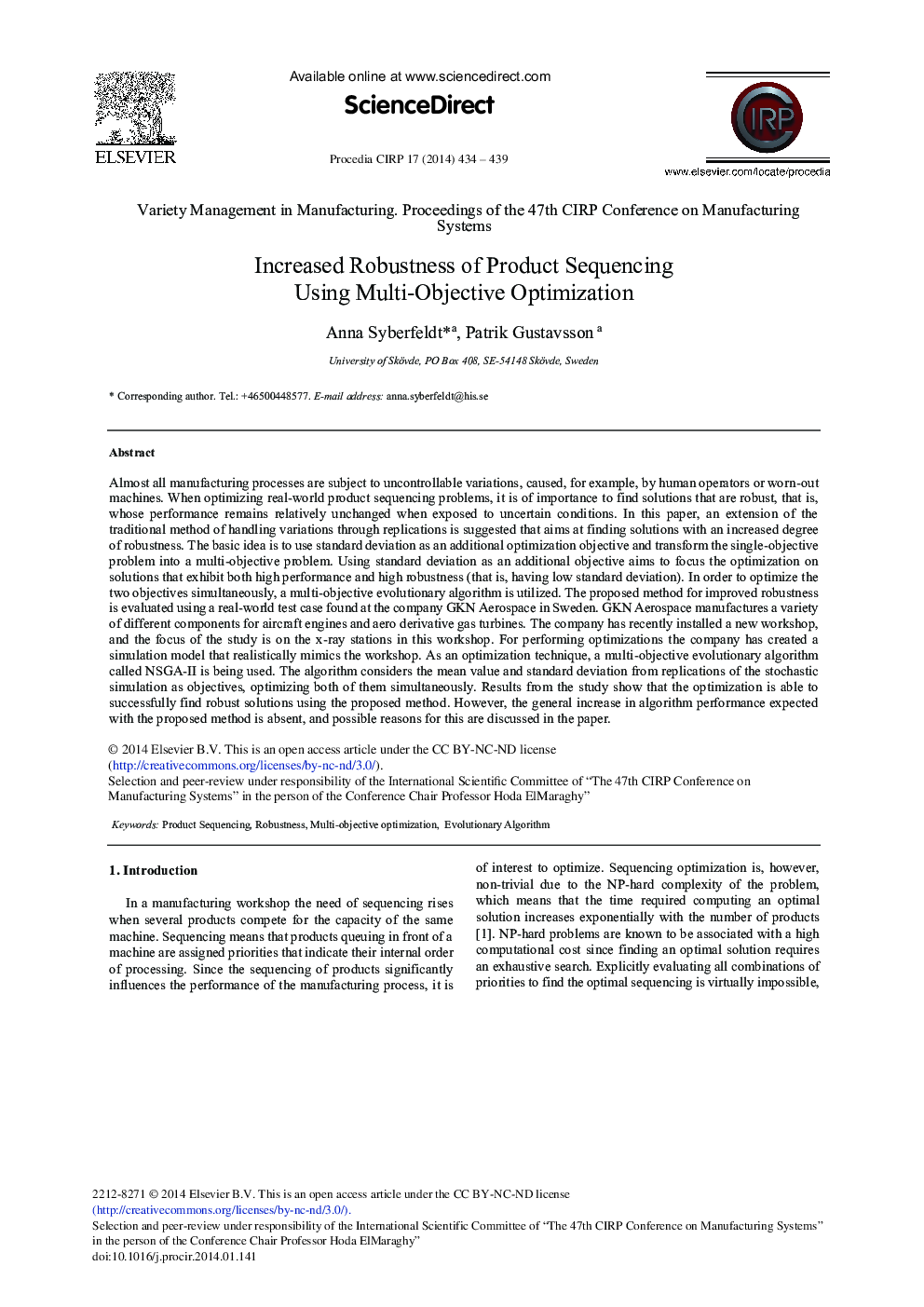| Article ID | Journal | Published Year | Pages | File Type |
|---|---|---|---|---|
| 1700412 | Procedia CIRP | 2014 | 6 Pages |
Almost all manufacturing processes are subject to uncontrollable variations, caused, for example, by human operators or worn-out machines. When optimizing real-world product sequencing problems, it is of importance to find solutions that are robust, that is, whose performance remains relatively unchanged when exposed to uncertain conditions. In this paper, an extension of the traditional method of handling variations through replications is suggested that aims at finding solutions with an increased degree of robustness. The basic idea is to use standard deviation as an additional optimization objective and transform the single-objective problem into a multi-objective problem. Using standard deviation as an additional objective aims to focus the optimization on solutions that exhibit both high performance and high robustness (that is, having low standard deviation). In order to optimize the two objectives simultaneously, a multi-objective evolutionary algorithm is utilized. The proposed method for improved robustness is evaluated using a real-world test case found at the company GKN Aerospace in Sweden. GKN Aerospace manufactures a variety of different components for aircraft engines and aero derivative gas turbines. The company has recently installed a new workshop, and the focus of the study is on the x-ray stations in this workshop. For performing optimizations the company has created a simulation model that realistically mimics the workshop. As an optimization technique, a multi-objective evolutionary algorithm called NSGA-II is being used. The algorithm considers the mean value and standard deviation from replications of the stochastic simulation as objectives, optimizing both of them simultaneously. Results from the study show that the optimization is able to successfully find robust solutions using the proposed method. However, the general increase in algorithm performance expected with the proposed method is absent, and possible reasons for this are discussed in the paper.
